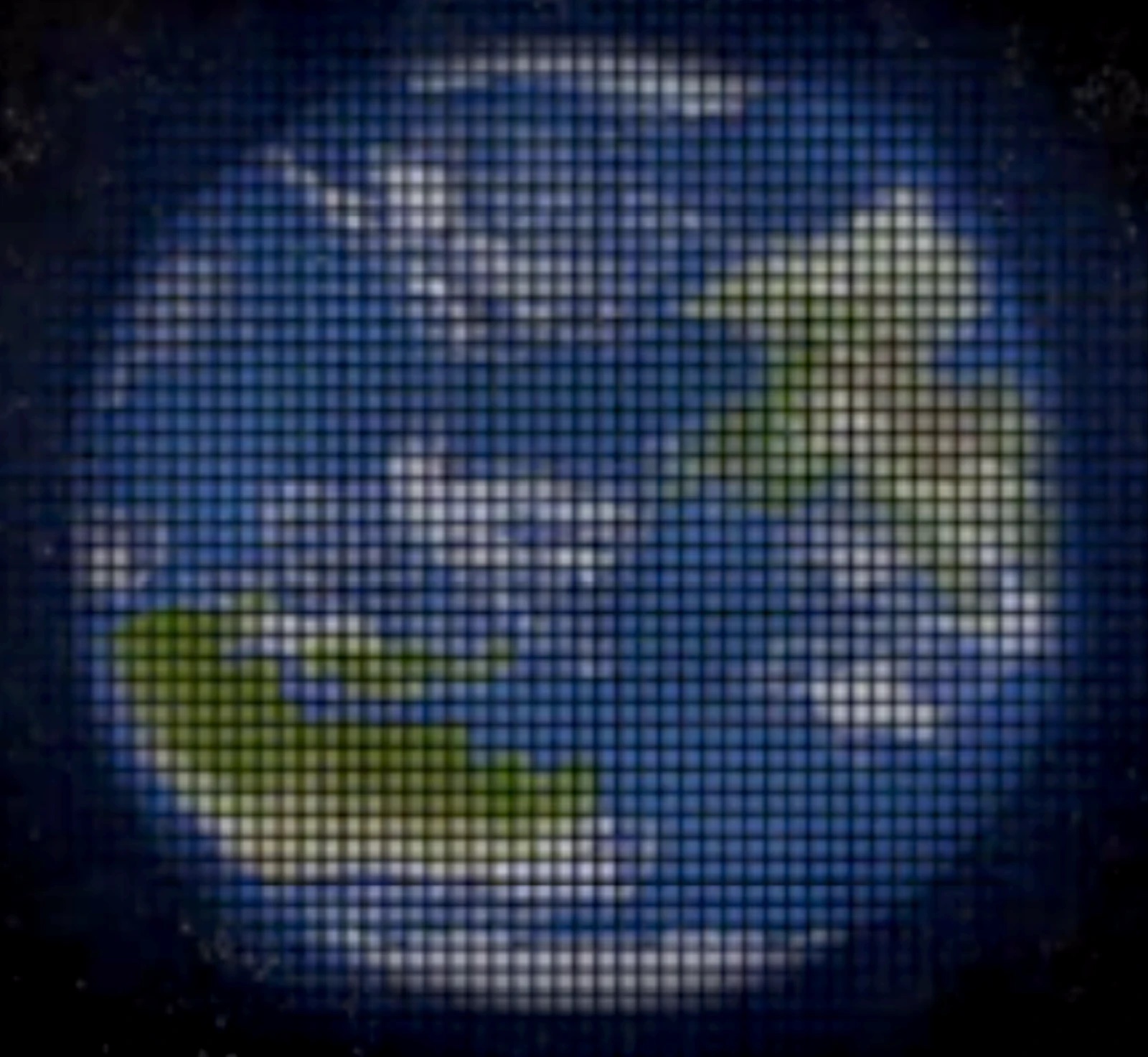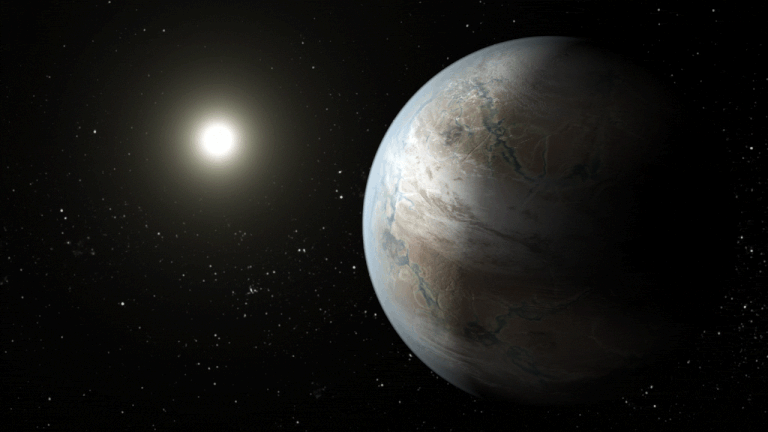Ask Ethan: Could SETI detect a “twin” of Earth?

- It’s very likely that right now, somewhere in the Universe, a form of life that’s intelligent and technologically advanced is out there, broadcasting, searching for someone else to communicate with.
- Here on Earth, we’re listening for precisely such a signal through endeavors like SETI and Breakthrough Listen, while simultaneously sending out broadcast signals ourselves.
- Because we’re both transmitting and listening, it leads us to wonder: how far away could we detect a civilization at the same technological level that we’re at?
Someday, if nature is kind to us, we’ll make the grandest discovery of all: that we aren’t alone in the Universe. While various observatories and space missions might someday soon find life on other worlds, our ultimate ambition is even grander: to find another intelligent, technologically advanced civilization out there, to receive and listen to their signals, to send our own human-generated signals their way, and to establish two-way communication. If there’s anyone else out there within a reasonable distance to make contact with, it’s only a matter of time, technology, investment, and luck before our searches pay off.
But how far along on the path toward finding extraterrestrial intelligence are we, really? Could we even detect another civilization that’s operating and broadcast at the level that humans are currently at here on Earth? That’s the question of David Dempster, who asks:
“[What is the] distance at which we could detect ourselves? I would love it if you would consider this as a topic for an article.”
It’s a remarkable question with a very sobering answer. After all, as Carl Sagan so eloquently and simply put it not all that long ago, “Absence of evidence is not evidence of absence.”

The first thing we have to realize is that the primary way we’re currently searching for intelligent aliens is by surveying the sky — and astronomical systems of particular interest — in radio waves. Radio waves make sense as a way to probe the Universe for a lot of independent reasons. First off, with very long wavelengths, radio waves can pass through most of the light-blocking material in the Universe: dust, gas, and neutral and ionized atoms of all species. Whereas many other wavelengths of light are absorbed (or, as astronomers call it, extincted) by these forms of matter, radio waves see them as practically transparent.
Second off, radio waves, because of their long wavelengths, can encode a much larger set of information into a transmission for the same total cost of energy compared to others. For example, an FM radio station that broadcasts at 90 megahertz has a typical broadcasting wavelength of 3.3 meters, or right around 10.8 feet. Compared to a typical wavelength of light visible by the human eye — between 400 and 700 nanometers — you can encode between about 5 million to 8 million times as much information in radio waves for the same energy cost as you can in visible light. For long-range communications, there’s no better form of light to use.
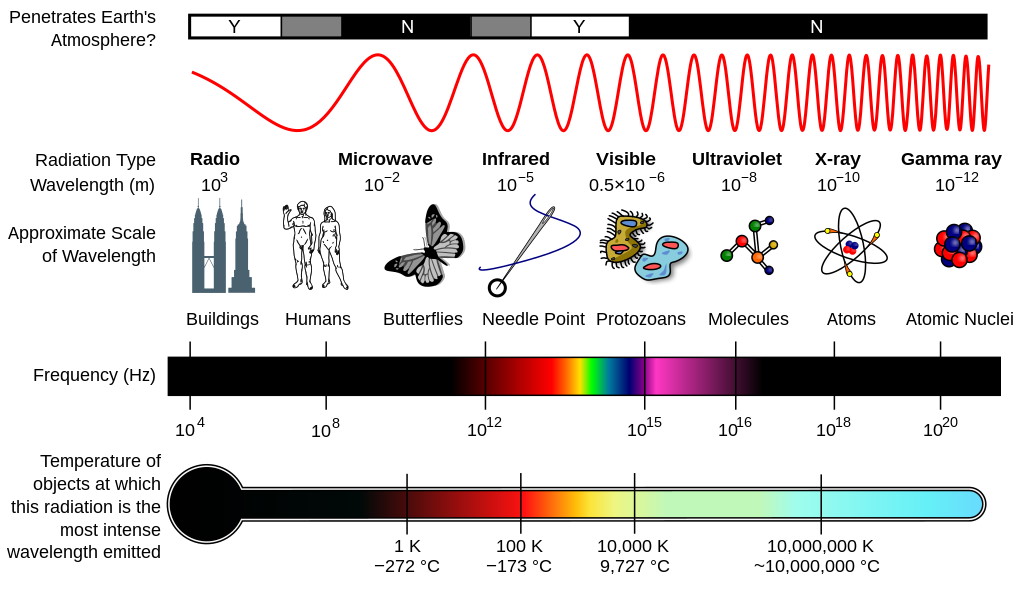
But that’s only taking into account the physics of light traveling through space. In reality, there are other forms of light that confound our ability to pick out a transmitted signal. While they might be interesting to astronomers:
- the galactic background of electromagnetic radiation,
- the cosmic background of radiation left over from the hot Big Bang,
- and the emitted radiation from various molecules in Earth’s atmosphere, such as oxygen and water vapor,
all serve as sources of noise when it comes to detecting an extraterrestrial signal.
It’s also worth keeping some limitations in mind when we consider this problem. We aren’t in space looking for these radio signals; we’re here on the surface of the Earth, using fixed radio dishes and arrays of radio dishes. We aren’t continuously monitoring the entire sky, but rather focus in on chosen targets-of-interest for relatively short periods of time. And while we default to searching in radio, it’s possible that other signatures — microwave emissions, neutrino signatures, gravitational waves, or even something we haven’t thought of yet — might be the preferred way for intelligent extraterrestrials to communicate.
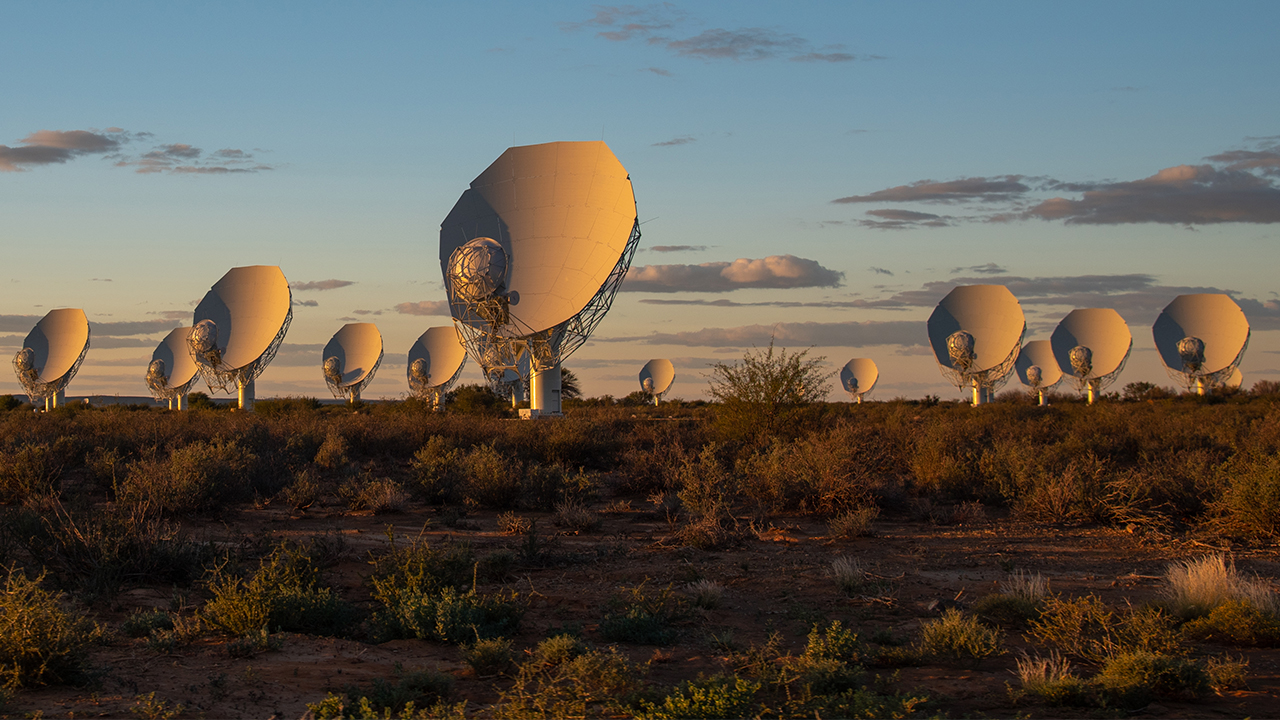
We also need to keep in mind that, here on planet Earth, we haven’t been transmitting such detectable signals for very long, and that the magnitude of those broadcast signals has changed dramatically over time. Although we experimented with radio transmissions in the early 20th century, these were local and low-power transmissions. It was only beginning in the 1930s that such signals became powerful enough to rise above the noise level in our own Solar System and reach out into the Universe beyond our own little corner of space.
Beginning in the 1960s and 1970s, we even began to transmit our own directed, high-powered messages toward chosen targets in space: such as individual stars and collections of stars all bound together under their own mutual gravity. With greater power and also narrow-band transmissions, the intensities of these signals could more easily rise above the galactic, terrestrial, and cosmic backgrounds that would otherwise prevent such signals from being detectable.
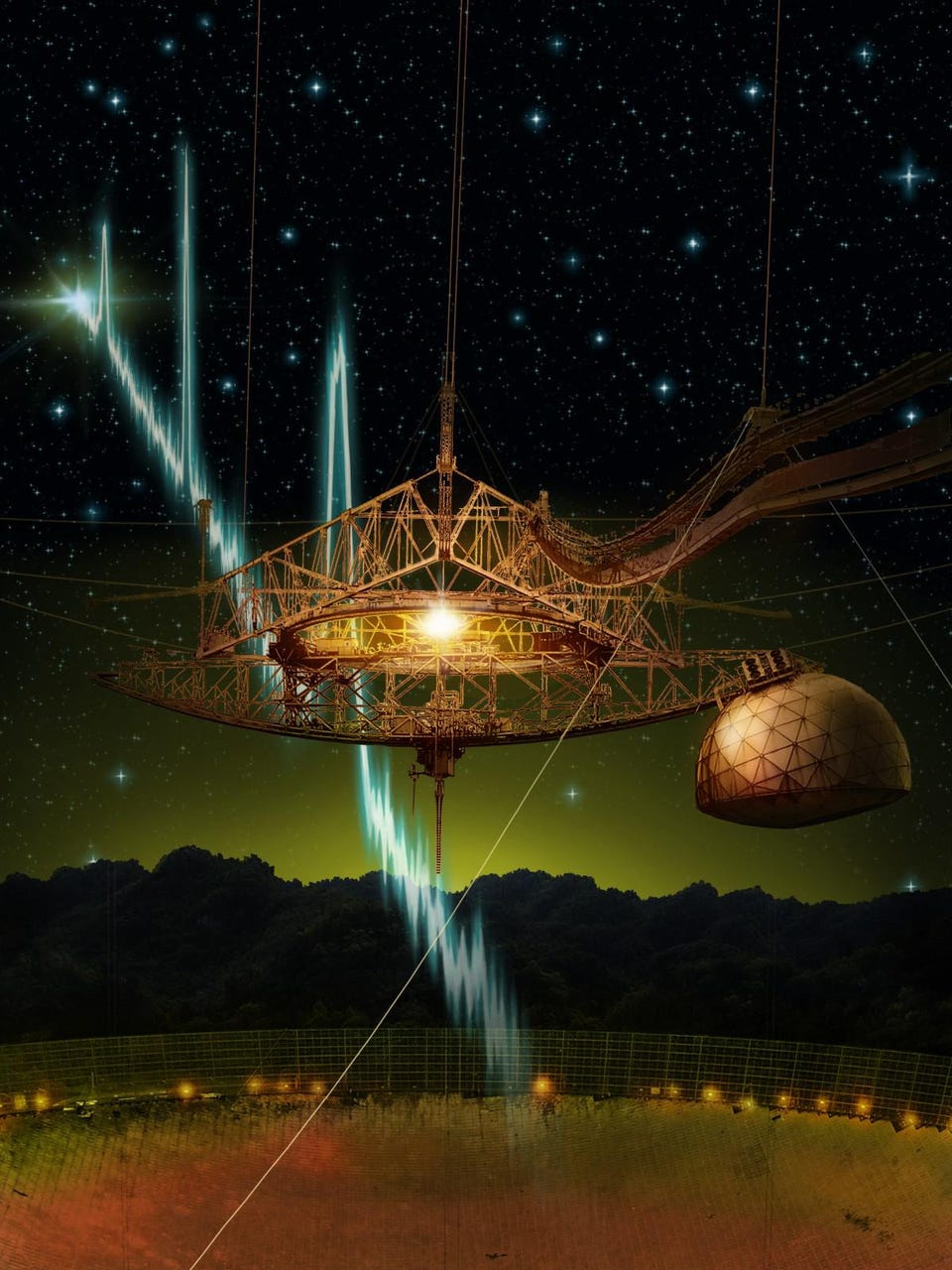
However, our world has also changed since that era. Our radio transmissions peaked long ago, back in the era of broadcast television and radio. Now, with the advent of cable, satellite tv and radio, and the internet, fewer and fewer people are listening to broadcast television and radio, and as a result there are fewer high-powered transmissions at those wavelengths. It’s very likely that a concerted effort would need to be made to both communicate and listen — well beyond the electromagnetic waves we simply produce as a by-product of human civilization — if two species from across the Universe wish to make contact.
One of the more remarkable possibilities would be to “piggyback” on a naturally occurring transition, where the combined effects of atmospheric emission, the galactic background, and the cosmic radiation background are all low: at either the spin-flip transition of hydrogen (at 1420 MHz in frequency, or 21 cm in wavelength), or at the frequency where one of the most powerful naturally occurring masers, the hydroxyl line (at 1662 MHz in frequency, or ~18 cm in wavelength) occurs. At greater frequencies (shorter wavelengths), the cosmic radiation becomes more important, while at lower frequencies (longer wavelengths), galactic background dominates.
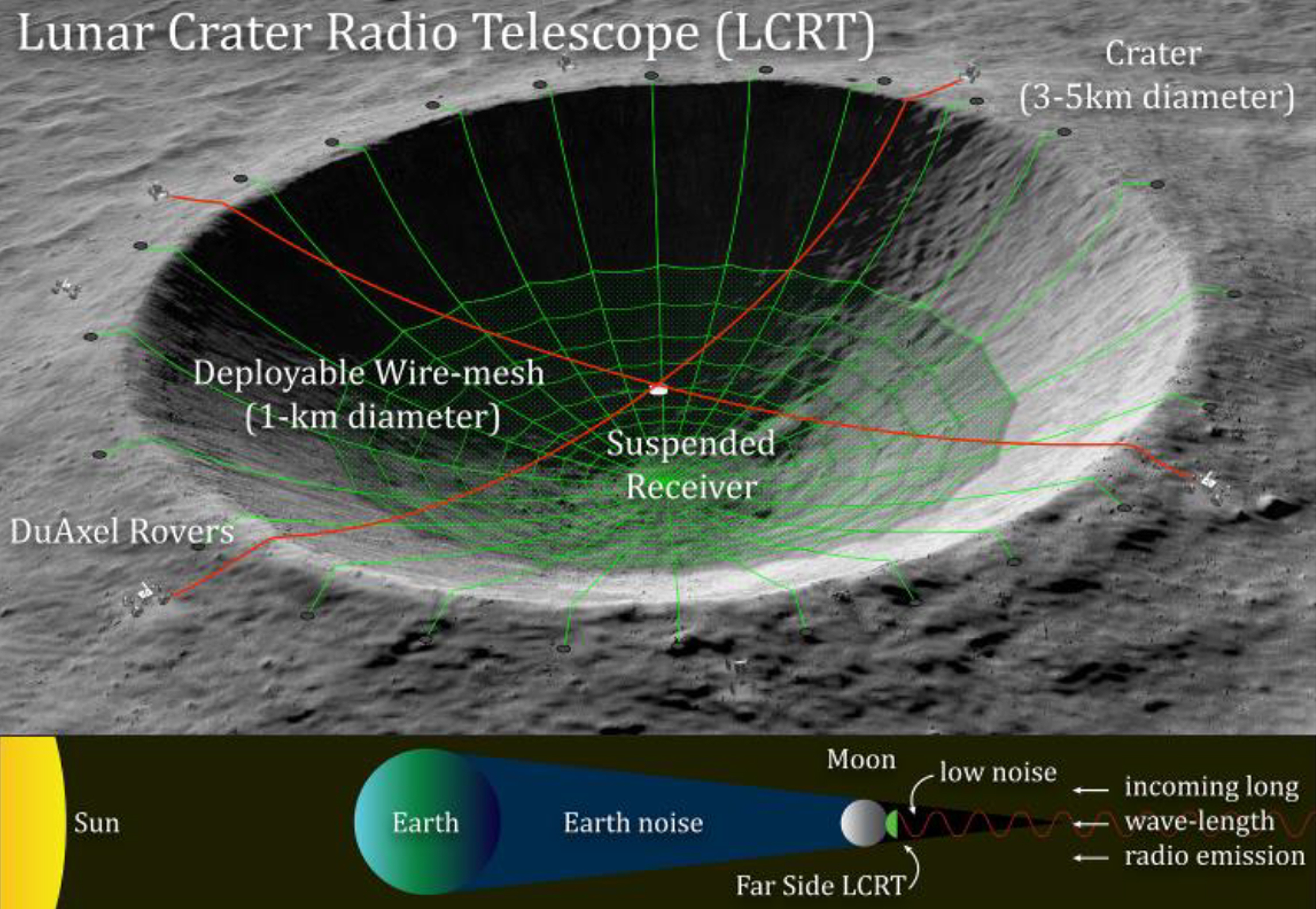
We can dream of what capabilities we’ll gain once the next-generation Very Large Array (ngVLA), designated a highest-priority endeavor by the Astro2020 decadal, gets built and comes online. We can dream about putting radio telescopes or even arrays of radio telescopes on the Moon: a serious proposal with tremendous benefits. But — just like direct imaging of Earth-sized exoplanets, using transit spectroscopy to measure the atmospheres of potentially Earth-like worlds, or endeavors to engage in interplanetary paleontology within our Solar System to dig up ancient (or even extant) organisms — these endeavors are all looking ahead to the future.
What about right now? What about with the signals we are emitting and/or have already emitted, and what about with the detection technology we have used or are using today?
This needs to be handled on a case-by-case basis, because each particular scenario that we envision has different physics at play and would result in a different range where detection is both reasonable and plausible. With that said, let’s run through the various possibilities and learn how far we, with our current technology level on Earth, could be from a copy of ourselves, also with Earth-level technology, and still detect our presence.
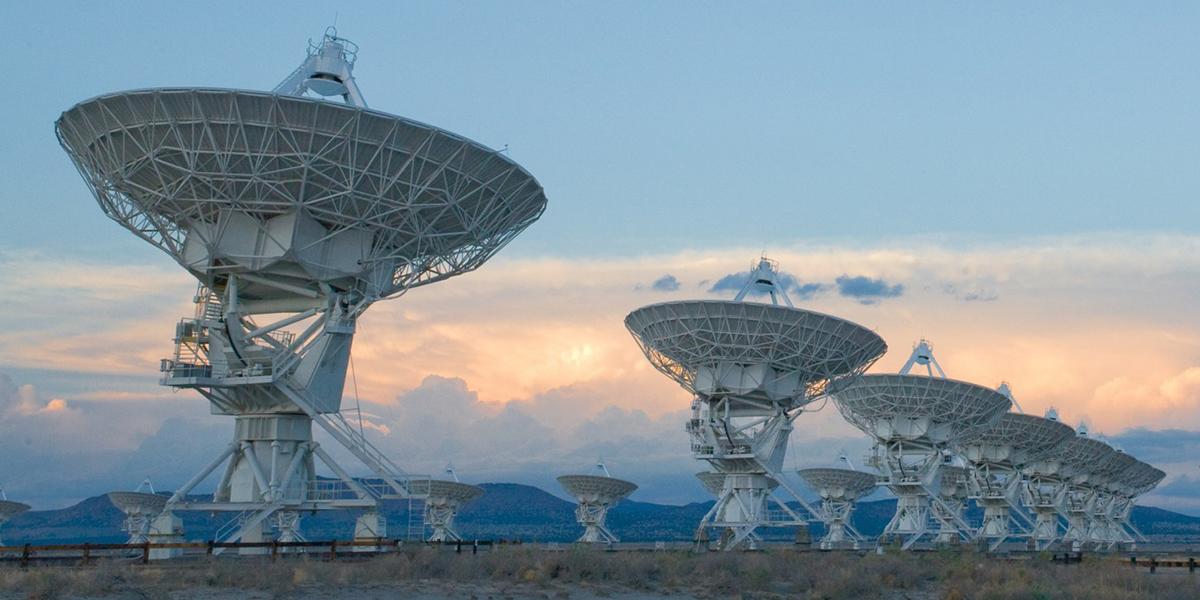
How far would Earth-created signals that rise above the various cosmic and galactic backgrounds have reached?
Although the movie Contact famously imagined a scenario where an alien civilization received Earth’s broadcast transmission from the 1936 Olympics and sent it back to us, it turns out that those early emissions would be drowned out by the combined effects of passing through the atmosphere and our radio-loud Sun. These signals, as well as all commercial radio broadcasts from the first half of the 20th century, are simply too weak to rise above the noise floor that would render them undetectable to even current terrestrial technology.
But there have been military transmissions that do have the right power and frequency characteristics to be detected over hundreds of light-years: the radar transmissions that were set up during the Cold War to detect any incoming ballistic missiles. Given that these systems were first developed in the late 1950s and early 1960s, it’s reasonable to draw an imaginary sphere about 60-65 light-years in radius around the Earth, and to state, “If an Earth-like civilization is within this distance of us, they would be able to detect Earth’s presence from the transmissions we’ve already sent out into the Universe.” In principle, this will increase by about tenfold with current technology as time goes on, and the lack of any return signals could be used, with some assumptions, to state that at about half that distance (~30 light-years) there are no civilizations that received our signals that were immediately interested in sending a return signal back to us.

What about the Arecibo message, or other attempts to deliberately send a message toward extraterrestrial civilizations?
Signals such as this could go much farther, in principle. With the combined factors of:
- a constant intensity,
- a simple, repeating message,
- a single, narrow frequency,
- and a directed, collimated broadcast beam,
we’re no longer talking about a few hundred light-years in range, but rather tens of thousands of light-years in range. It’s no coincidence that the Arecibo message was aimed not at a single star, but at a globular cluster: a collection of hundreds of thousands of stars all located within a few dozen light-years of one another.
However, a civilization located along the line-of-sight of this “pencil beam” would have to get lucky to find us: they’d have to look in the right direction at the right time and record the signal in sufficient detail to decode that it did indeed contain some sort of intelligently-created signal. We didn’t send this signal in a repeating fashion; we didn’t continue to send it over the timespan of months or years or decades; we didn’t send it to a wide variety of targets within round-trip communication distance. It’s possible that someone will someday receive it, decode it, and send a return message, but if so, we won’t be able to know about it for another ~50,000 years or so.
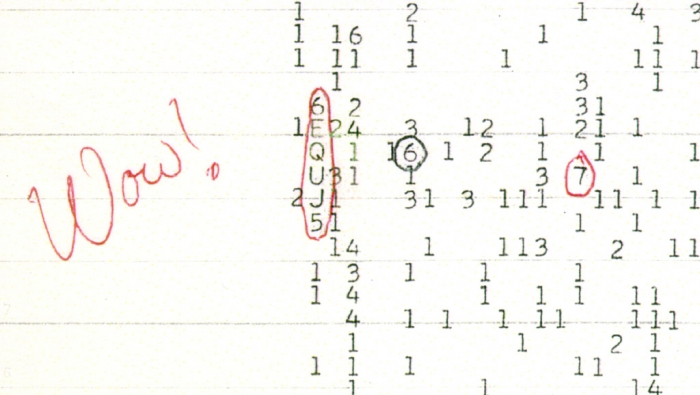
What about the most compelling signal we’ve ever detected? Could that have come from intelligent aliens?
There is one, and only one, signal that we’ve ever received that has the appearance of something we might expect to be transmitted by extraterrestrials: the Wow! Signal. On August 15, 1977 — a full 47+ years ago already — the Big Ear radio telescope detected an anomalously large radio signal in one particular region of the sky: large in intensity, long in duration, and unlike anything else ever seen before or since. Although it had no detectable modulation, which is how information is typically transmitted over radio waves, it peaked at more than four times the intensity, and with some ~6 times the duration, of any other source ever seen.
What was particularly interesting about this is that it occurred almost, but not quite, at the frequency of the aforementioned 21 centimeter hydrogen line. Could it have been another Earth-like civilization’s attempt at an Arecibo-like message, and we happened to be in its line-of-sight right at the critical moment?
Maybe. But a more mundane explanation is that a collection of hydrogen atoms, moving at about 10 km/s (a typical velocity for matter within the Milky Way) with respect to us, briefly emitted this signal, and then stopped. In 2024, a mundane astrophysical explanation as an excited “flare” of activity was put forth: a far more compelling explanation than “aliens.”
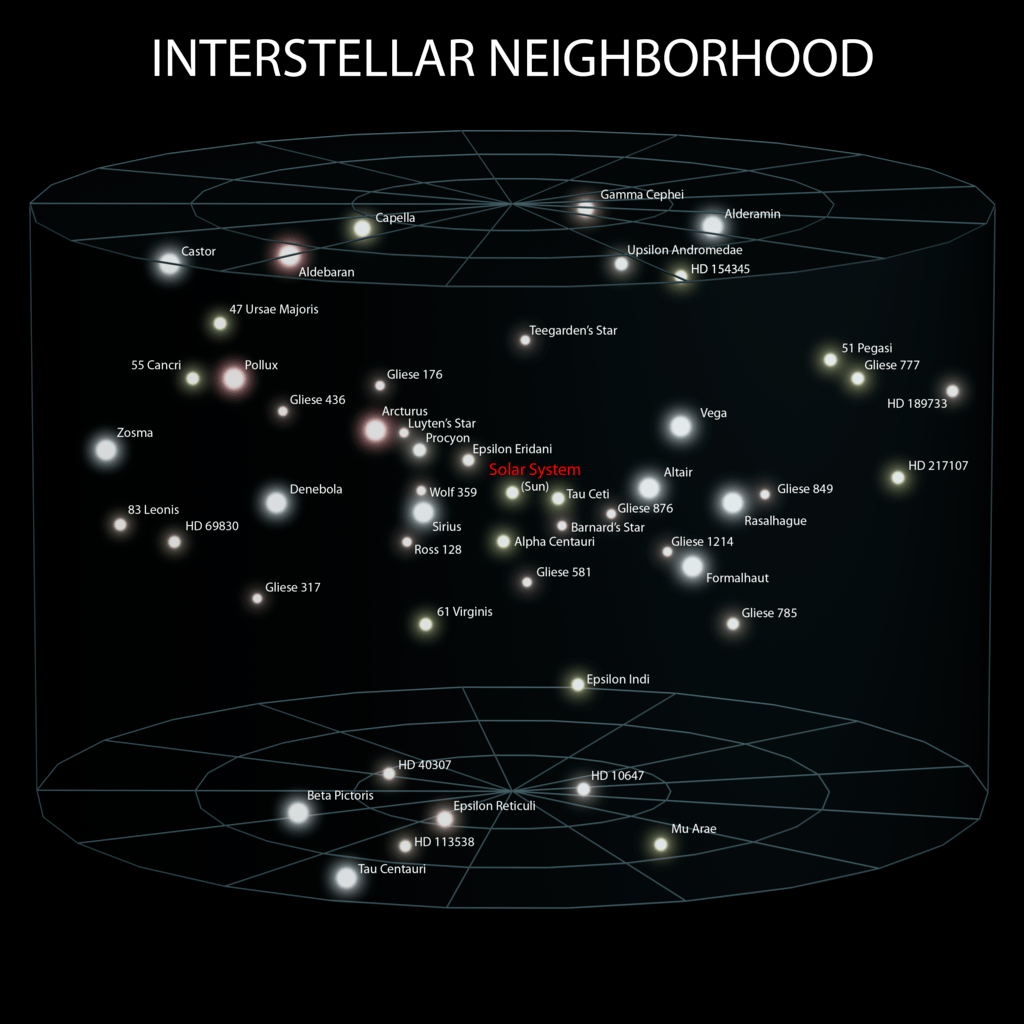
Of course, the stars that we could have communicated with by now, or that could have detected our presence via the electromagnetic signals we’ve created, represents only a tiny, minuscule fraction of all stars present within even the Milky Way galaxy. The RECONS collaboration, formed in 1994 to take a census of the nearest stars to our own, has extended its search to 25 parsecs (about 82 light-years) and has found a total of about 3000 stars within that distance of us. For comparison, there are somewhere around 400 billion (400,000,000) stars within the Milky Way, reminding us that our presence would still be undetectable to more than 99.999% of the potential civilizations in our galaxy.
All of this is to say, yes, it’s true: we haven’t found any indication of intelligent extraterrestrials out there yet. But this shouldn’t dissuade us from looking, as we’ve only been at it for a very short time, with relatively primitive techniques and technology at that. We might have learned that practically every star is unlikely to have an intelligent, technologically advanced civilization on it at present, but that just means the lowest-hanging branch doesn’t have fruit on it. If we want to know who else is out there, we have to keep searching until we actually find something. In the great cosmic lottery of life, we won’t know what the odds of winning any prize are — or whether human beings are even the grand prize in the drawing — until we’ve examined enough lotto tickets to uncover the answers to our deepest questions of all.
Send in your Ask Ethan questions to startswithabang at gmail dot com! This article was first published in December of 2022. It was updated in 2024.


